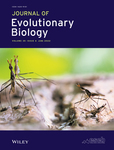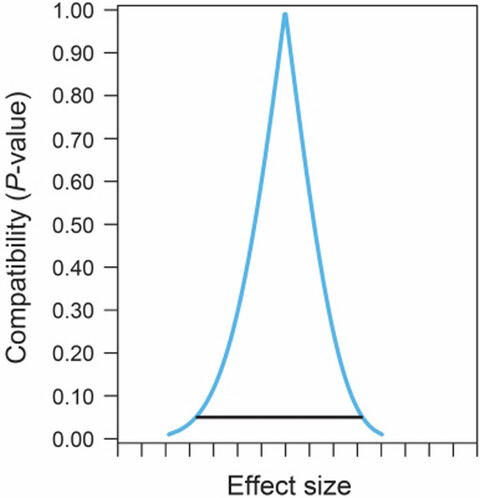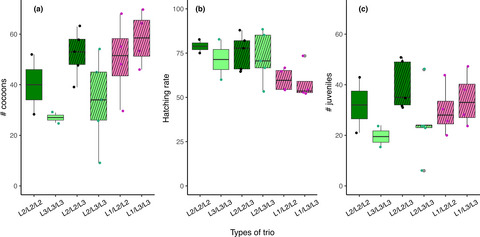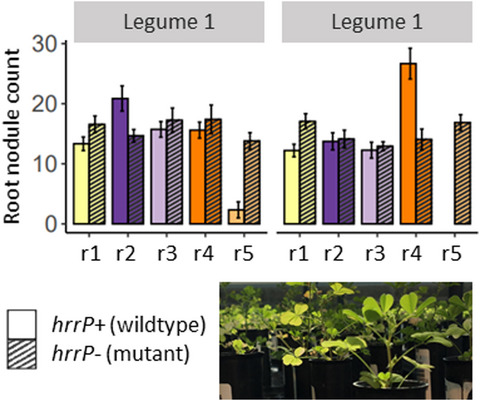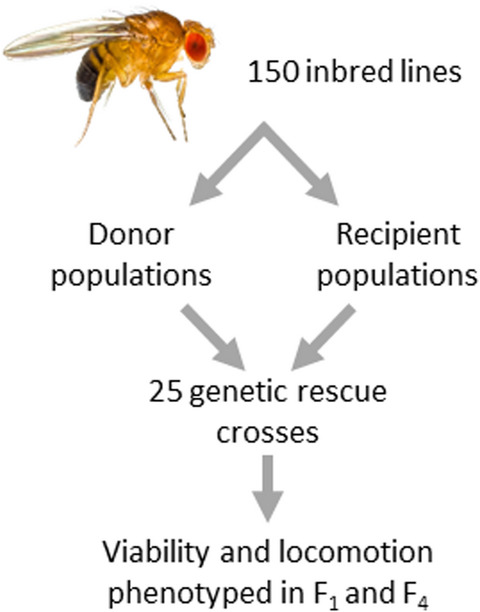Journal list menu
Export Citations
Download PDFs
COVER IMAGE AND ISSUE INFORMATION
METHODS ARTICLE
Why and how we should join the shift from significance testing to estimation
- Pages: 777-787
- First Published: 18 May 2022
RESEARCH ARTICLES
Complex effects of environment and Wolbachia infections on the life history of Drosophila melanogaster hosts
- Pages: 788-802
- First Published: 09 May 2022
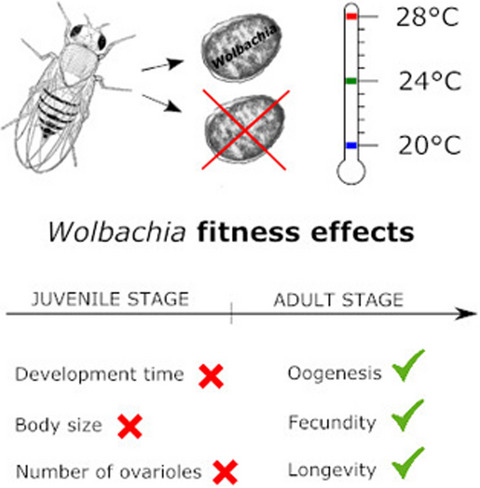
The reasons for the recent global replacement of the Wolbachia wMelCS variant by wMel in Drosophila populations remain unknown. In our study, we investigated the fitness of wild-caught D. melanogaster strains from Portugal at three developmental temperatures in presence and absence of these two Wolbachia types. The endosymbionts had no influence on life history traits that are determined during the development, such as development time, body size and number of ovarioles. In contrast, adult fitness components like oogenesis, fecundity and longevity were affected by temperature and Wolbachia type.
Effects of genetic vs. environmental quality on condition-dependent morphological and life history traits in a neriid fly
- Pages: 803-816
- First Published: 05 May 2022
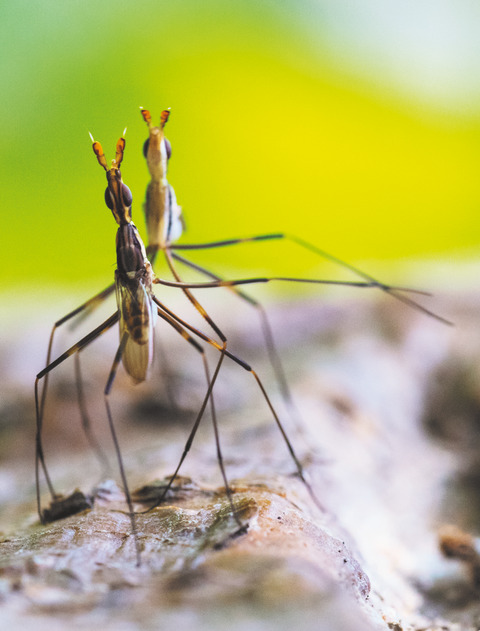
In many animals (like the neriid flies below), the expression of male condition-dependent traits is influenced by both genetic and environmental quality. We show that the environmental component has much more consistent effects on trait expression. Our findings raise questions about the potential for condition-dependent traits to signal genetic quality.
Evolution of sex allocation plasticity in a hermaphroditic flatworm genus
- Pages: 817-830
- First Published: 18 May 2022

Interspecific variation in both sex allocation and sex allocation plasticity in the hermaphroditic flatworm genus Macrostomum, including among closely related species, suggests that both sex allocation and sex allocation plasticity are evolutionarily labile. Moreover, self-fertilization, but not mating strategy, predicts the evolution of sex allocation plasticity in Macrostomum.
Mitonuclear discordance and patterns of reproductive isolation in a complex of simultaneously hermaphroditic species, the Allolobophora chlorotica case study
- Pages: 831-843
- First Published: 14 May 2022
Negotiating mutualism: A locus for exploitation by rhizobia has a broad effect size distribution and context-dependent effects on legume hosts
- Pages: 844-854
- First Published: 04 May 2022
Responses to artificial selection for locomotor activity: A focus on death feigning in red flour beetle
- Pages: 855-867
- First Published: 04 May 2022
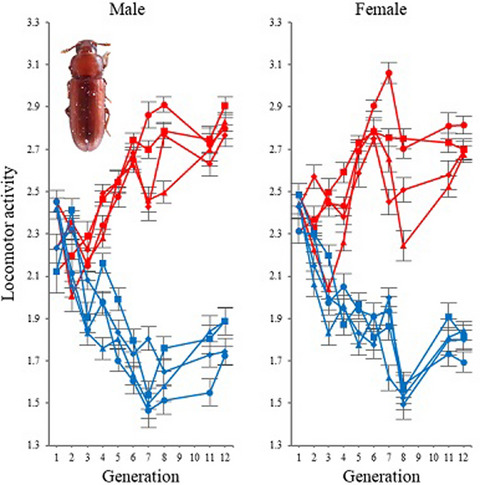
We investigated effects of artificial selection for locomotor activity on the death-feigning behavior, sprint speed, and biogenic amines in the red flour beetle Tribolium castaneum. There were significantly differences in death-feigning behavior and sprint speed between selected strains, but not biogenic amines.
Sustained positive consequences of genetic rescue of fitness and behavioural traits in inbred populations of Drosophila melanogaster
- Pages: 868-878
- First Published: 09 May 2022
Correlated evolution between orb weaver glue droplets and supporting fibres maintains their distinct biomechanical roles in adhesion
- Pages: 879-890
- First Published: 13 June 2022
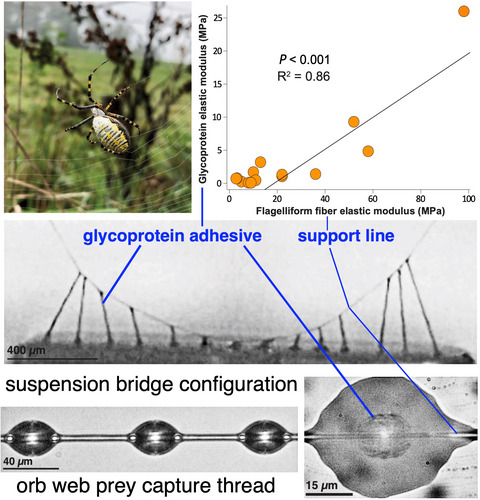
Orb weaving spiders, such as the Argiope aurantia pictured, construct adhesive threads. These threads consist of a support line and droplets with adhesive cores. During prey capture, the thread may enter a suspension bridge configuration that requires contributions from both thread components. Suspecting this interdependce, we were able to demonstrate that the stiffness of both capture thread components are correlated when accounting for phylogeny in 16 orb weaving species.
SHORT COMMUNICATION
The evolution of the additive variance of a trait under stabilizing selection after autopolyploidization
- Pages: 891-897
- First Published: 04 May 2022
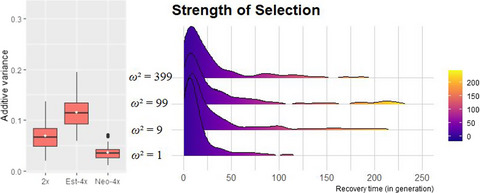
In this paper, I investigate the short- and long-term consequences of genome doubling on the additive genetic variance of populations. I found that polyploidization is associated with an initial decrease of adaptive potential, quickly compensated (less than 200 generations on average) by the better masking of recessive deleterious mutations associated with polyploidy, which compensates for the initial decrease in additive variance.




